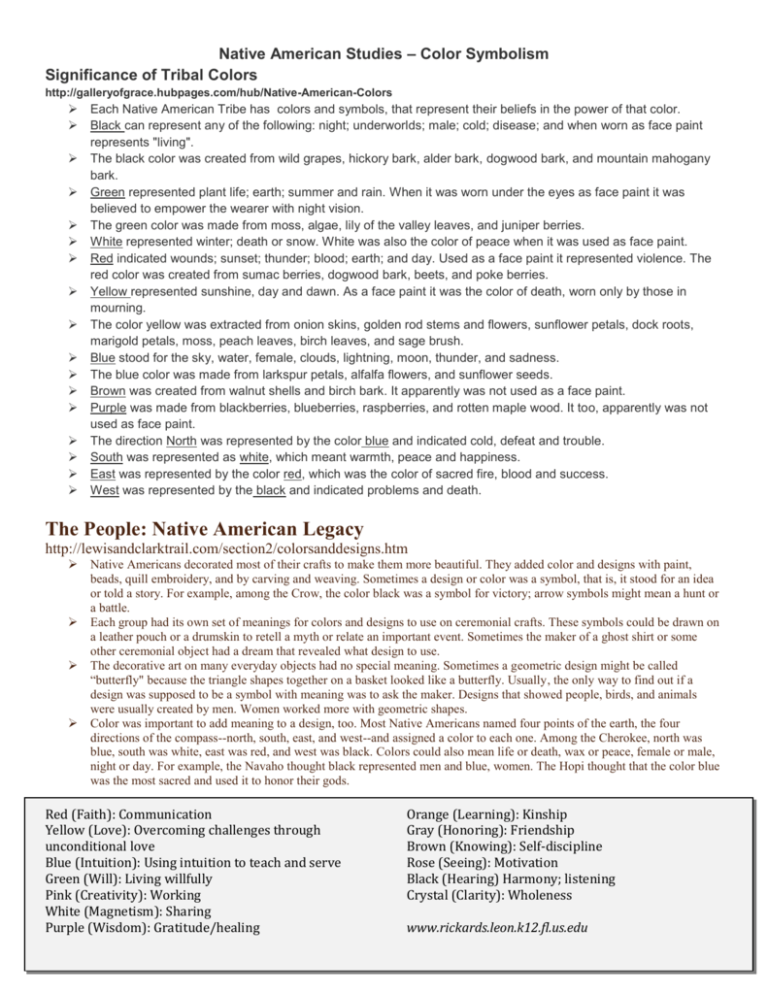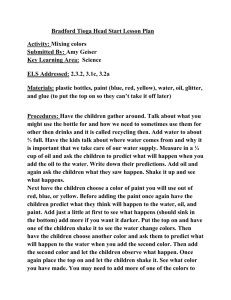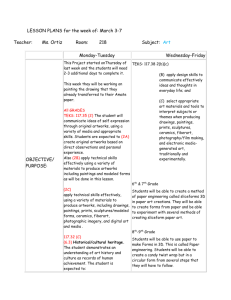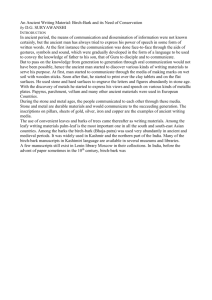NA Color symbolism handout
advertisement

Native American Studies – Color Symbolism Significance of Tribal Colors http://galleryofgrace.hubpages.com/hub/Native-American-Colors Each Native American Tribe has colors and symbols, that represent their beliefs in the power of that color. Black can represent any of the following: night; underworlds; male; cold; disease; and when worn as face paint represents "living". The black color was created from wild grapes, hickory bark, alder bark, dogwood bark, and mountain mahogany bark. Green represented plant life; earth; summer and rain. When it was worn under the eyes as face paint it was believed to empower the wearer with night vision. The green color was made from moss, algae, lily of the valley leaves, and juniper berries. White represented winter; death or snow. White was also the color of peace when it was used as face paint. Red indicated wounds; sunset; thunder; blood; earth; and day. Used as a face paint it represented violence. The red color was created from sumac berries, dogwood bark, beets, and poke berries. Yellow represented sunshine, day and dawn. As a face paint it was the color of death, worn only by those in mourning. The color yellow was extracted from onion skins, golden rod stems and flowers, sunflower petals, dock roots, marigold petals, moss, peach leaves, birch leaves, and sage brush. Blue stood for the sky, water, female, clouds, lightning, moon, thunder, and sadness. The blue color was made from larkspur petals, alfalfa flowers, and sunflower seeds. Brown was created from walnut shells and birch bark. It apparently was not used as a face paint. Purple was made from blackberries, blueberries, raspberries, and rotten maple wood. It too, apparently was not used as face paint. The direction North was represented by the color blue and indicated cold, defeat and trouble. South was represented as white, which meant warmth, peace and happiness. East was represented by the color red, which was the color of sacred fire, blood and success. West was represented by the black and indicated problems and death. The People: Native American Legacy http://lewisandclarktrail.com/section2/colorsanddesigns.htm Native Americans decorated most of their crafts to make them more beautiful. They added color and designs with paint, beads, quill embroidery, and by carving and weaving. Sometimes a design or color was a symbol, that is, it stood for an idea or told a story. For example, among the Crow, the color black was a symbol for victory; arrow symbols might mean a hunt or a battle. Each group had its own set of meanings for colors and designs to use on ceremonial crafts. These symbols could be drawn on a leather pouch or a drumskin to retell a myth or relate an important event. Sometimes the maker of a ghost shirt or some other ceremonial object had a dream that revealed what design to use. The decorative art on many everyday objects had no special meaning. Sometimes a geometric design might be called “butterfly" because the triangle shapes together on a basket looked like a butterfly. Usually, the only way to find out if a design was supposed to be a symbol with meaning was to ask the maker. Designs that showed people, birds, and animals were usually created by men. Women worked more with geometric shapes. Color was important to add meaning to a design, too. Most Native Americans named four points of the earth, the four directions of the compass--north, south, east, and west--and assigned a color to each one. Among the Cherokee, north was blue, south was white, east was red, and west was black. Colors could also mean life or death, wax or peace, female or male, night or day. For example, the Navaho thought black represented men and blue, women. The Hopi thought that the color blue was the most sacred and used it to honor their gods. Red (Faith): Communication Yellow (Love): Overcoming challenges through unconditional love Blue (Intuition): Using intuition to teach and serve Green (Will): Living willfully Pink (Creativity): Working White (Magnetism): Sharing Purple (Wisdom): Gratitude/healing Orange (Learning): Kinship Gray (Honoring): Friendship Brown (Knowing): Self-discipline Rose (Seeing): Motivation Black (Hearing) Harmony; listening Crystal (Clarity): Wholeness www.rickards.leon.k12.fl.us.edu









